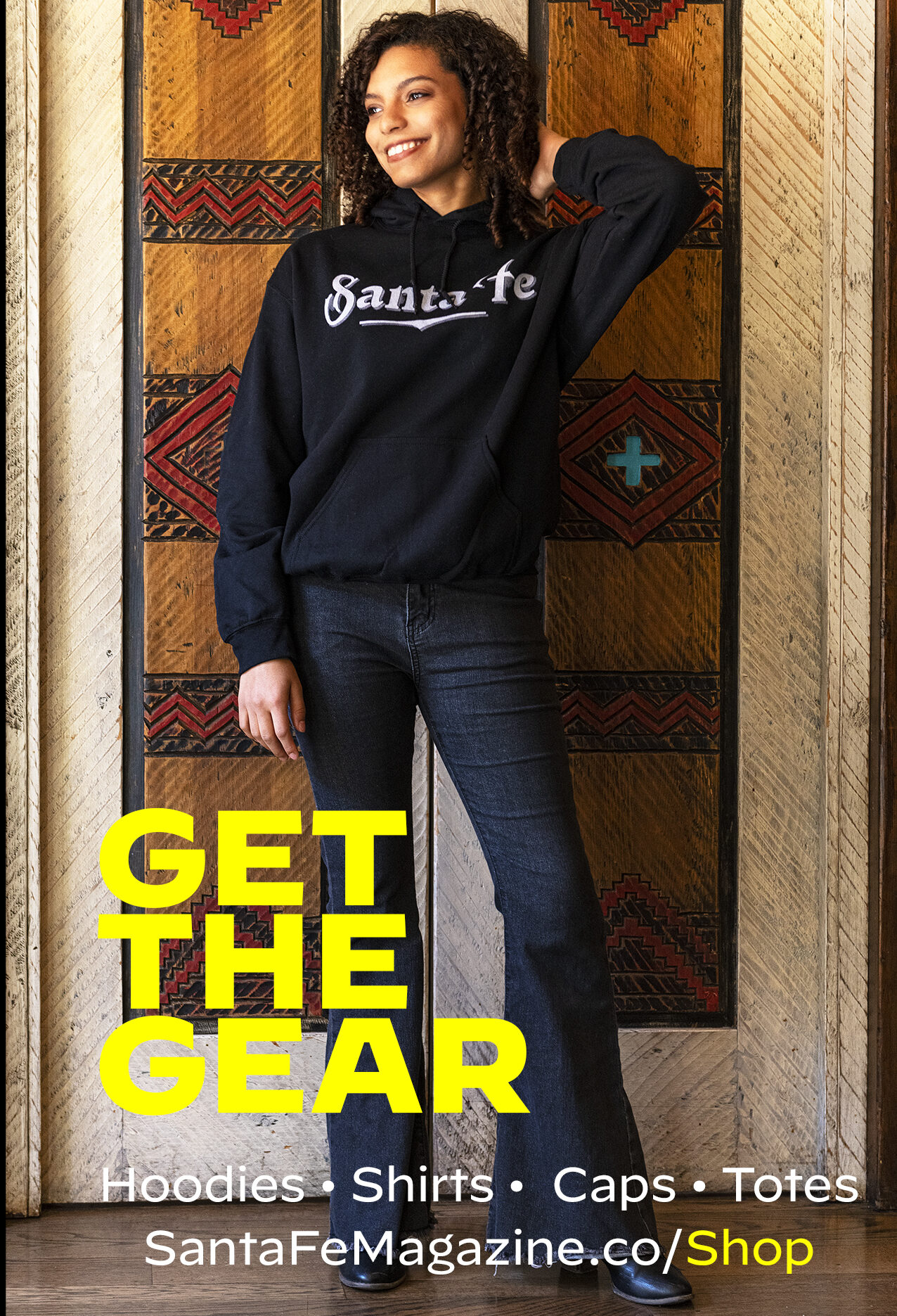DREAMS OF NEW MEXICO, DREAMS OF AFRICA. When he was 22, Jochen Zeitz left his Native Germany and barnstormed across the USA to find the mythic Southwest he saw in his boyhood cowboy movies. By the time he was 29, he was CEO, and architect of a stunning turnaround, at Puma, leading them to record profits. Now, he runs Harley-Davidson, where he’s charged with leading the iconic bar and shield to new heights.
And he’s also saving the Black Rhino. Seriously.
But at heart, he’s still that little boy who imagined finding the American dream in the deserts of the Southwest.
Tell me about the arc of your life, the good and the bad. Assuming there is any bad. How do you swim upstream in a difficult world?
As a kid, I always had the fascination for the Wild West. In New Mexico, I live so nearby to where many of those movies that I watched as a kid in Germany were shot.
I had another fascination; Africa. Today, I also live in Kenya on a wildlife conservancy that I founded 20 years ago. You could, I guess, call me a romantic adventurer — as a child that had this dream of one day exploring America from what I’ve seen on television, and at the same time also exploring Africa.
Then as a 22-year-old, I had the chance to get to America for the first time. I drove a car to Phoenix where I started for six months at the American Graduate School. I started in Queens, picked up the car, went to Niagara Falls, Buffalo, St. Louis, Denver, all down the Rocky Mountains, and explored a bit of the old Wild West history along the way. Then to Santa Fe. I had read all about the Santa Fe Trail and the landscape, the town and the historic center. It was a signal to one day come back and maybe find a home in Santa Fe, but that wouldn’t happen until a long time later.
When I was in Phoenix, I explored the Southwest – the national parks, White Sands and Chaco and Bandelier. My affection for America became even stronger than my imagination as a kid. So I decided to start my career in America and that was in New York at Colgate-Palmolive. I had this American dream that you could make it; it doesn’t matter where you come from and how old you are.
How did you wind up in Santa Fe?
I came back to Santa Fe about 13 years ago. I came back to that town that I always loved since I was a 22-year-old driving through it. It’s the place I took my girlfriend, now my wife, to and said, well, why don’t we start a family in Santa Fe?
What made Georgia O’Keeffe love New Mexico made me love it too. The landscape is just extraordinary, right? I certainly enjoy riding in New Mexico. Much of the year you can ride here.
I assume you’re riding electric bikes?
No, I ride my Harley motorcycles. I do have an electric ride. I have our latest touring bike, I have a road bike. I have a Pan America touring bike. I have two side cars, one from the ‘70s and one prototype that I take my kids in. I have two replicas from Easy Rider, Billy Bike and Captain America.
Back to Africa, why do black rhinos need protection?
In the ‘70s there was massive poaching and hunting going on that almost got the black rhino into extinction. They are the endemic rhino species in Kenya and were reduced to well under a thousand.
If you think of putting nature back to the times when those species were roaming freely, that’s the one species that’s missing. For me, the ultimate success is to bring that one species back that went extinct in the part of Kenya where we live. It’s an umbrella species. If you protect the rhino, you protect the entire flora and fauna. Everything prospers with the rhino. It has an iconic status as a species, but it’s also an umbrella for protecting the entire ecosystem, whether it’s insects, mammals or the riverine areas or forests or savannah. With the rhino, the whole ecosystem actually gets protected and prosperous. And if you could create a connected area that has elephants to maintain the migratory corridors, which otherwise might be interrupted, it’s so important because the rhino has the highest status in Kenya as a species, from a government and from a public perspective.
And we are now at a point where we’re saying, how can we grow this population and create a connected area that essentially brings the rhino back to its ancestral home, but in an area that is bigger than many of the national parks in Kenya?
So our conservancy is three and a half times the size of Manhattan. That’s 20,000 acres. And we are trying to scale that to 850,000 acres. That’s the project that I’m working on right now.
It must take an enormous amount of planning…
You need water sources, you need road infrastructure. You need to have security and intelligence in order to protect such a vast area with rangers. We have 55 rangers patrolling. We are developing a conservation drone in Utah with a company there, to help us survey the land, not just on foot and by car, but from the air as well. You have radio communication transmitters, and it’s quite an extraordinary undertaking. The land has to be rhino ready, so the flora and fauna has to be intact before you can bring in the rhino. Everything else is infrastructure, logistics and pretty significant costs.
You have to have the pasture for the rhino to graze on. The black rhino eats leaves from a bush. They’re not a browser. You need the water because rhinos need to drink every day, so you need to create different natural water sources.
We’ve built several hundred miles of roads, because you have to account for each rhino every day or two, to count them. They need to become allweather roads so you can drive on them in bad weather.
You need the ranger units who are fully trained in terms of protecting against poachers. You need to have sniffer dogs, tracker dogs, that can follow up on any incident. You have to have strong community relations. We’ve built six schools with more than 2,000 kids. Then you need to get approval by the government that you have the infrastructure in place and the security network in place to eventually translocate rhinos from different parts of the country onto
the property.
How do you feel it’s going?
I think people get it and understand it and embrace it. It’s a network that’s growing and growing. It’s not just looking at conservation in an old fashioned way where you conserve, but you don’t create or enhance livelihoods of local communities. Creating win-wins are critical and you can’t do one at the expense of the other. Finding that right balance adapted to a specific location gives it the flexibility to adapt to the circumstances which is very important.
It sounds like you have to protect your sactuary from an invading army.
It’s the ivory horn that has sadly become so valuable that it costs more than gold on the black market. So for poachers, the rhino horn has become so valuable that it’s a big income source for some people and a big temptation to poach rhino just for its horns. Its horns. Essentially, it’s like chewing your fingernails. That’s it. That’s what the rhino horn is. But unfortunately people attribute medicinal value to it. It’s become almost a party drug in a way, but it has no benefit other than what your fingernails have.
I have a foundation that has been operating for more than 13 years, that is fundraising for several initiatives, including the rhino sanctuary. Which is why we are having this fundraising dinner with Bob and Billie Redford in September, September 13th.
Do you ever feel like your success goes to your head?
I like a challenge, a big opportunity and once I’m passionate about it and I believe I can do it, I just stick with it until it’s done. I was fortunate enough to always come out on top of it, even though that didn’t always appear to be the case during the journey. So, yeah, I guess I thrive in difficult situations.
My mother used to say to me, always make sure you stay with both feet on the ground. So I don’t think I have a problem with that.
Learn more at Investor.Harley-Davidson.com/Our-Strategy
SUBSCRIBE TO SANTA FE MAGAZINE HERE!
Photo Courtsey Jochen Zeitz



